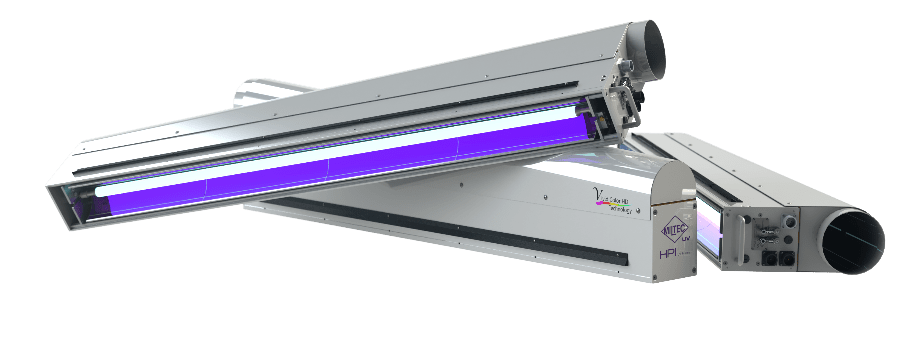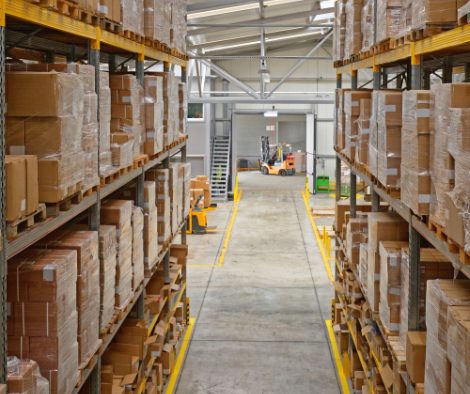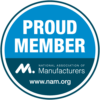Maintaining a safe manufacturing facility is essential to a company’s success. People in your company need to feel safe while they are at work, and they must go home in the same condition in which they arrived. Implementing the right safety measures can help your company avoid accidents and shutdowns when mishaps occur, keeping your company’s productivity at peak levels. Here are five refresher tips for keeping your facility and your people safe.
Make safety a top priority in the entire company
Developing a culture of safety is critical to the success of your program. Your company’s safety program will only be as successful as the people running it make it. Safety doesn’t only apply to coworkers in the warehouse, and it isn’t adhered to with some posters on the doors. Every employee, from the CEO to the assembler, must understand the importance of safety in the workplace, understand the safety expectations of their positions, and know what to do in the event of an emergency. When safety is a top priority, employees will be more likely to take the time to do the right thing, and when everyone is level set on the rules and expectations, accidents will be reduced.
Be proactive. Implement a “Near Miss” program, or some means for employees to submit written safety recommendations easily and quickly. Whispers to co-workers and supervisors won’t fix safety issues. Don’t be afraid to ask if something is being done the safest way. Better safe than sorry…always. Lastly, police each other and enforce safety standards with co-works as you see them. This could be as simple as reminding someone to wear safety glasses or correcting them when they go outside of designated walkways.
Identify and eliminate hazards
The workforce must understand the value of good housekeeping. It’s critical to keep floors free of slipping and trip hazards. Wherever you are, in an office or on the shop floor, look around and check for stray cords, liquids, accumulated garbage, or other potential hazards. Taking just a few minutes to inspect and straighten your area each day can prevent serious injuries.
The most cost-effective and functional strategy to keep your public and warehouse spaces organized and safe from hazardous conditions is to utilize signs and stickers. Workers can avoid serious injuries by clearly labeling racks, equipment, contents, and pathways. It’s also critical to clearly indicate emergency exits, supplies, and medical equipment.
Everything in its place
Not only important to shipping and receiving, keeping inventory organized and accessible is vital to maintaining a safe working environment. Besides slips, trips, and falls, injuries from material handling and forklift accidents round out the top three hazards in the warehouse.
Ensuring that inventory is processed and shelved quickly helps keep walkways clear and accessible. Stacks of boxes clogging traffic lanes will increase the risk of injuries. Only properly trained employees should use lifts or forklifts to stock equipment, and it is essential to understand shelving weight limits and how materials should be stacked to achieve effective distribution. Furthermore, using the proper equipment to handle materials will help to reduce lifting, pushing, pulling, and reaching injuries.
Failing to prepare is preparing to fail
Hazards can come in the form of man-made or natural events, chemical spills, injuries, or biological issues. It’s important to have an emergency action plan outlining how you will respond to accidents and emergencies. This will help ensure that the right safety measures are being put in place to keep the entire business as safe as possible.
Emergency plans should be written and included as part of any employee onboarding. It may even be helpful to include indexed copies of the plan in easily accessible locations throughout a business; especially in vulnerable areas such as chemical storage or manufacturing assembly.
Plans should include the location of any tools, kits, or aids that could offer assistance in the event of an injury. As a refresher, these would include first aid kits, the location of eye washes, emergency turn off valves, AED equipment and even cleaning supplies. The U.S. Department of Labor’s Occupational Safety and Health Administration (OSHA) is a valuable resource for helping plan for warehouse hazards with an entire website dedicated to proper design, planning, and training.
Training tactics
You can’t just set it and forget it when it comes to safety. To truly be a “safety first” company, there needs to be a commitment to continuous improvement and frequent training for employees. One way to make safety the top priority in the workplace is to invest in training and having a Safety Officer, who is responsible for ensuring that the right safety measures are being put in place to keep the warehouse as safe as possible. Ensuring that the Safety Officer has the funding and resources needed is to key to their success. Additionally, providing the Safety Officer with the training and time needed to inspect, train, and implement changes, will help reduce injuries and maintain peak productivity levels.
In addition to a Safety Officer, establishing a Safety Committee can aid in building a strong safety culture. A Safety Committee allows employees to participate in the process and sends a message to the rest of the company that management is committed to continuous improvement of the safety program.



